The US Small Business Administration (“SBA”) recognizes that many independent contractors and sole proprietors were not able to borrow sufficient funds because their net income, as opposed to their gross income, was nominal, resulting from the incurrence of ongoing operating expenses, regardless of the economic impact the COVID-19 crisis was having on their business.
As a result, the SBA issued a new Paycheck Protection Program (“PPP”) Interim Final Rule (“Rule”) on March 3, 2021, which will permit independent contractors and sole proprietors who file Schedule C Business form as part of their 1040 Income Tax return to to base their PPP Loan upon their “gross income” (line 7 of Schedule C), for their first draw PPP loan, if no loan has yet been received and/or for their second draw PPP loan, if the first loan has been received and used. The gross income reported on line 7 will still be capped at the same $100,000 as was net profit, so the maximum loan a Schedule C taxpayer may receive remains at $20,833 ($100,000 x 20.833%).
Until the issuance of the new Rule Schedule C filers could receive a PPP loan based solely upon 20.833% of the net profit shown on Line 31 of Schedule C of their Form 1040, not exceeding $100,000. This is based upon what was shown as Net Profit on Schedule C, which basically consists of revenues, less normal business expenses. This change makes self-employed individuals eligible for larger loans.
However, the change implemented by the Rule is not retroactive. The SBA has ruled that borrowers whose PPP loans have already been approved based upon previous guidance cannot now increase their loans based on the new gross income methodology. The Rule allows a Schedule C filer who has yet to be approved for a PPP first or second draw loan to elect and calculate the owner compensation share of its payroll costs based on either net profit or gross income.
This election will result in many self employed individuals being eligible for either a PPP first draw loan, if they were not previously eligible for one, or a larger PPP second draw loan, regardless of the amount of the first loan.
If a Schedule C filer has employees, the borrower may elect to calculate the owner compensation share of its payroll costs based on either net profit or gross income minus expenses reported on lines 14 (employee benefit programs), 19 (pension and profit-sharing plans), and 26 (wages (less employment credits)) of Schedule C. If a Schedule C filer has no employees, the borrower may simply choose to calculate its loan amount based on either net profit or gross income.
The Rule provides different sets of maximum loan calculation instructions for Schedule C filers with no employees and with employees. Borrowers may use their PPP proceeds to cover the following:
- Owner compensation (if net profit is used) or proprietor expenses (business expenses plus owner compensation if gross income used).
- Employee payroll costs.
- Mortgage interest payments.
- Business rent payments.
- Business utility payments (for borrowers entitled to claim a deduction for such expenses on their 2019 or 2020 Schedule C, depending on which one was used to calculate the loan amount).
- Interest payments on any other debt incurred before Feb. 15, 2020.
- Covered operations expenditures, as defined in Section 7A(a) of the Small Business Act, to the extent they are deductible on Schedule C.
- Covered property damage costs, as defined in Section 7A(a) of the Small Business Act, to the extent they are deductible on Schedule C.
- Covered supplier costs, as defined in Section 7A(a) of the Small Business Act, to the extent they are deductible on Schedule C.
- Covered worker protection expenditures, as defined in Section 7A(a) of the Small Business Act, to the extent they are deductible on Schedule C.
To mitigate the risk of fraud, a Schedule C filer that reports more than $150,000 gross income to calculate its first-draw PPP loan will not be able to claim the safe harbor provided for borrowers that, together with their affiliates, received PPP loans of less than $2 million. The SBA said it is eliminating the loan necessity safe harbor for these borrowers because they may be more likely to have other available sources of liquidity to support their business’s operations than Schedule C filers with lower levels of gross income.
The Rule also implemented updated eligibility rules to remove restrictions preventing PPP loans going to small business owners with prior nonfraud felony convictions or who are delinquent or in default on federal student loan payments. These changes are reflected on the updated PPP borrower forms for first and second draws.

